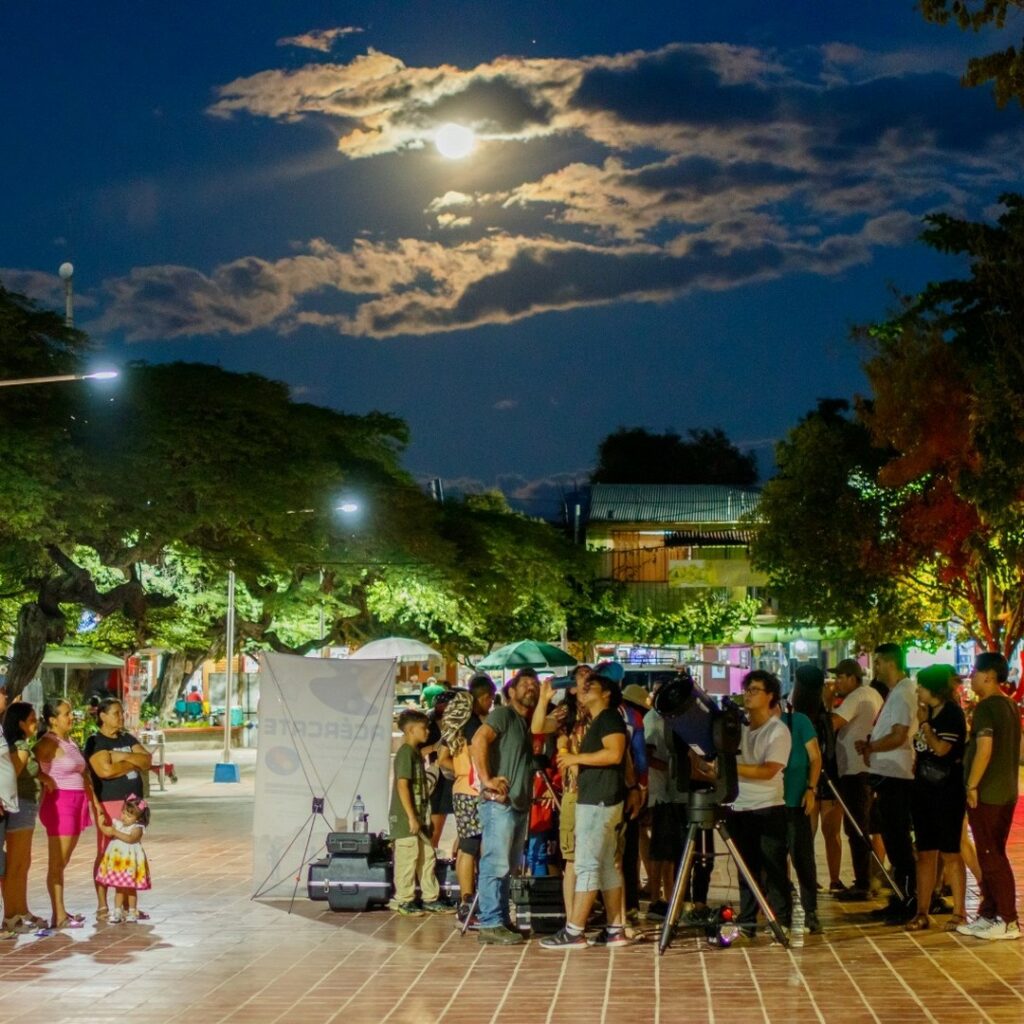This project aimed to leverage the rich natural, heritage, and cultural resources of Tatacoa to enhance science education and astrotourism. Located in southern Colombia, Tatacoa is renowned for its clear skies, minimal light pollution, and diverse landscapes, making it an ideal site for astronomical observations and scientific tourism. We adopted a multi-faceted approach to achieve our objectives, involving the local community, educators, and entrepreneurs. We established science clubs called “”Nature and Sky Keepers”” at Colegio Gabriel Plazas. These clubs engage students in hands-on learning experiences related to astronomy, biology, and paleontology. Nearly 100 students participate, fostering a love for science and the natural world. A scale model of the solar system was configured, providing a tangible and educational representation of our cosmic neighborhood. This installation serves as a valuable resource for both students and tourists, offering a visually engaging way to learn about the planets and their relative distances. We installed light boxes that display the history of the universe. These visual aids narrate the story of the cosmos from the Big Bang to the present day, making complex astronomical concepts accessible and fascinating for all visitors. The project successfully integrated educational initiatives with tourism development, fostering a greater appreciation for science and the natural world among the local community and visitors. The collaboration with Colegio Gabriel Plazas and local entrepreneurs has laid a strong foundation for continued growth and development in Tatacoa.
Activities
A1. Presentation of the project to local community
We presented the main goals of the project to academic and local community of Tatacoa. We tried innovative method for reaching local people. With the support of National Observatory , National University of Colombia, we bring with us the inflatable planetarium dome with a capacity for 40 people, A particular video in the right format was designed by our team.
A2. Teacher Training Program (TTP)
This activity was conducted during March 2023 at Gabriel Plazas school. A total of 23 teachers attended the sessions that we divided as follows: (1) Territory appropiation and (2) Science clubs conformation tools
TTP is structured as follows:
Day 1. Part 1. This we are and we have (2h). Main goal : To recognize together with participants the main potentialities of Tatacoa for astrotourism. Methodology : Construction of a map with participants based on elements of social cartography.
Part 2. Walking our steps (2h) Main goal : Identify previous attempts and current entrepreneurships. Careful review of previous science clubs, classroom activities related to tourism and astro-tourism. Methodology : In collaboration with participants, identify at least four previous attempts of astrotourism entrepreneruships. Strengths and problematic points for the development of such ideas.
Part3. Looking at the neighbor (2h) Main goal : Share experiences on astrotourism around world with teachers. Methodology : Presentation on astrotourism activities in
arkSkyAlqueva, La Palma and Antofagasta.
Day 2. Part 1. Tourism and basic sciences (6h) Main goal: Share with teachers, activities that make use of basic sciences for improving tourist attention. Tips for science clubs creation. Methodology: Module 1 (2h): Tropical forests in Colombia, flora and fauna at Tatacoa, The care of Magdalena river. Module 2 (2h). Stories from the desert. The pre-Cambrian period and the richness. Module 3 (2h). The marvelous skies of Tatacoa, a starlight destination for preserving dark skies. Part 2. Science clubs (2h). Main goal: Guidelines for the creation of science clubs at Gabriel-Plazas Methodology: Presentation that includes didactic material which can be used by teachers with future students.
A3. A walk through the solar system
In this project we create a scale model of the solar system with the clubs, by learning how to
calculate scale distances and the relative sizes of the planets. The diameter of the Sun is 55cm. In this scale, we obtain the following eleven points onto a map of our region of interest
A4. The light pollution station
Small station in plastic wood showing the impact of luminic pollution on the sky observation. This station is inspired in astropark (OAD). Our design consists in showing differences between two images of the starry night one of them taken with a high level of ligh pollution. The station includes the sentence : “The light that we see from celestial objects has travelled during thousand million years before it reaches our eyes, don`t lose it during the last fraction of second of their whole travel.”
A5. The history of an universe
A set of 11 pictures (light boxes) telling the story of an universe. The history starts with a sunset in Tatacoa and ends with the history of this tropical forrest including fauna and flora.
Outcomes
Increased student engagement in science through the “Nature and Sky Keepers” clubs.
Empowered local entrepreneurs to create sustainable tourism businesses.
Enhanced educational resources with the scale solar system and light boxes.
Attracted more visitors to Tatacoa, boosting the local economy and raising awareness of its natural and scientific heritage.



